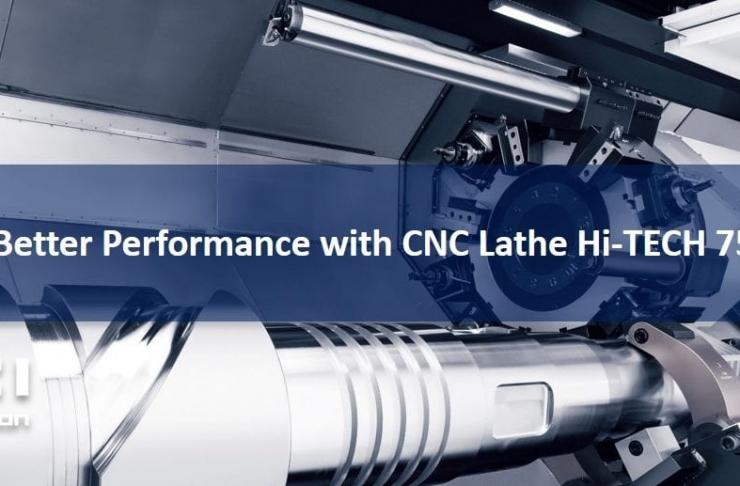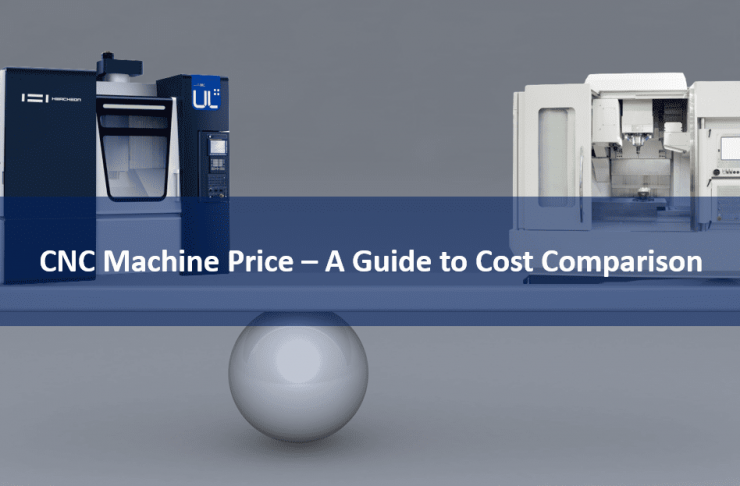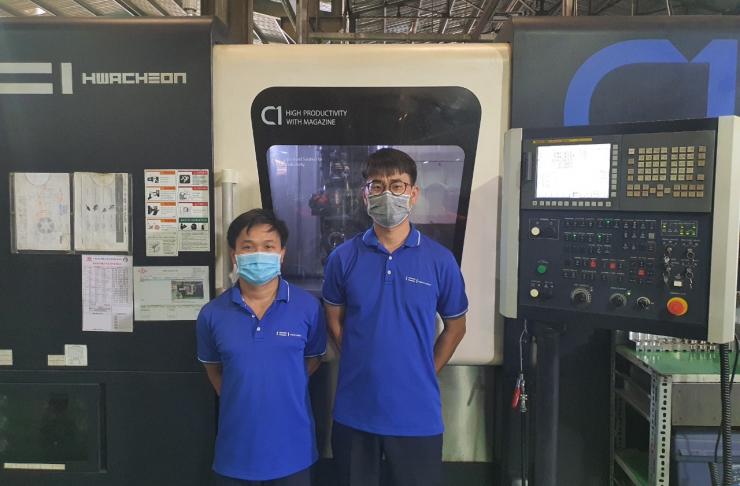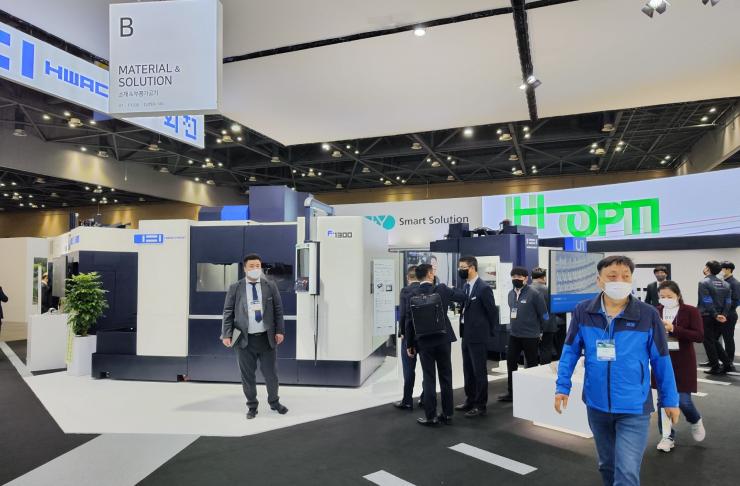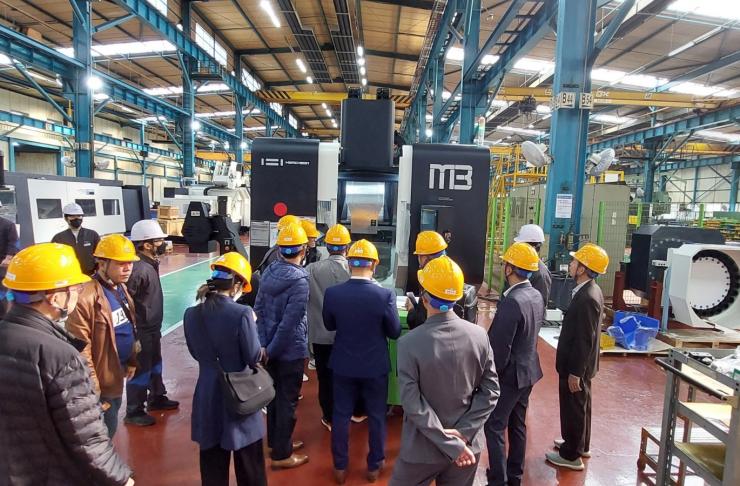How To Improve CNC Machine Tool Accuracy
Time To Invest In A New CNC Machine Tool
Imagine that you have a new manufacturing opportunity or task available to you. You check the engineer’s drawing to understand what needs to be done, and start to plan the sequence and process to machine a specific part.
You go through your existing machines, and check on the skill proficiency of your machine operators to see if they can fabricate this part.
Unfortunately, your current CNC machine tools do not have the required tolerances to make the part. They may be of a lower specification or are too old to cater to this new need.
When this happens, you may wish to start investing in a newer and more modern technology.

A Tale Of CNC Machine Tool Suppliers
At this point, you need to weigh the cost of manufacturing each part against the cost of acquiring new CNC machines.
You remember what you used to spend for your current machines, and set a budget that is as low as possible in order to maximise your profits.
10 years ago, you would’ve spent USD 80,000-100,000 for your Vertical Machining Centre. OK, you decide to set your budget for a new CNC machine to be USD 75,000. Let’s see what is available in the market.
As the weeks pass, you contact various machine tool sales people. They attend to you eagerly, offering an array of CNC machines to suit your set budget.
Some are lower in price. Others a little higher. Yet others may be more costly.
All of the promises made by these salespersons hinge on the fact their machines are newer and better than your current machines. However, none of these vendors consider the details and tight tolerances of the machined part.
One day however, a particular salesperson visits you. After you informed him of your specific requirement—while showing him the drawing of your new job—he takes a close look and studies it for a while.
Commenting that such a machined part may be “difficult to hold”, he then suggested that you’d need machines with good tool holders and cutting tools.
He also highlighted that temperature control is key – in particular, the temperature of your workshop and overall machines. He further adds that your new CNC machine will need linear glass scales, laser measuring tools and a touch probe to measure the machined part and do auto-off-sets.
The salesperson explains that his CNC machine is better than your current units and his competitors. After you ask him for the estimated price, he quotes you – USD 150,000-200,000 – subject to your final specifications.
This is shockingly higher than your set budget! You may even imagine that the seller was trying to fleece you.
However, you also start to think about what he explained, and realised that it made sense. After all, the other suppliers never talked about these factors. They were only concerned about your axis XYZ, price and the available stocks of their machines, offering additional discounts if needed.
You contact another supplier of a reputable brand which is well known in the market.
During his visit he mentioned and repeated most of the points of the 2nd sales representative. He further explained that his machine tool uses the Linear Drive system which is considered the best in the market.
His CNC machine price? A shocking USD 280,000-310,000 – this is even higher than the second vendor even though the machine size, spindle speed, and CNC controls are similar.
Now who should you believe?
Understanding CNC Machining Standards And Accuracy
What we’ve just described happens every day around the world. There are many different categories, quality standards, and levels of CNC machine tools – you need to know the differences in order to make the right choice.
While machine tool vendors may promise tolerances of +/- 1.5 micron or less, note that suppliers from different locations or countries may adopt different standards.
For example, there is a big difference between a JIS standard (used mainly by Japanese produced CNC machines) and a VDI standard (used by reputable European manufacturers as well as used by Hwacheon Machine Tool in South Korea).
These standards have already been used for over 30 years to measure and compare the accuracy levels of machine tools, especially in Asia Pacific.
To understand the differences – and the importance of these differences—it is necessary to learn and understand the process CNC machine tool manufacturer use when measuring their CNC machines after final assembly is done.

The Role Of “Mother Machines” In CNC Machine Tools
All reputable machines tool manufacturer which offer high quality CNC machines make use of a “Mother Machine” to make their own critical parts. These are machines which can achieve the highest tolerances – often within a few microns. The costs of such machines are often very high, and may be in the millions of dollars.
If an end user receives a quotation / offer for a basic standard Vertical Machining Centre at USD 70,000-100,000 (X = 1000 with 10-12,000 rpm spindle), and a promise from the vendor that this machine can achieve the same or even “on paper” better accuracy than an expensive “Mother Machine”, he needs to be extremely sceptical!
Such claims are too good to be true.
How Drive Systems, Guide Ways And Ball Screws Affect Accuracy
What about linear drive systems? Are they really necessary?
Such systems were designed a long time ago in order to help machine tools to achieve faster speeds. Hwacheon Machine Tools had our own experience when we designed and built a Horizontal Machining Centre over 18 years ago.
Today, demand for linear drive systems are still present. However, standard CNC machines often omit such systems due to their higher costs and greater complexity.
A linear drive system can help you to achieve good tolerances and accuracy. However, modern machines with good quality Ball Screws and Linear Roller Guides – or Solid Box Guideways (hardened, grinded, and hand scraped to perfection) – can deliver better outcomes in long-term accuracy and stability.
Thus, a CNC machining centre with high quality ball screws in all axis as well as solid hand scraped solid guide ways can achieve the same or similar accuracy to a linear drive version.
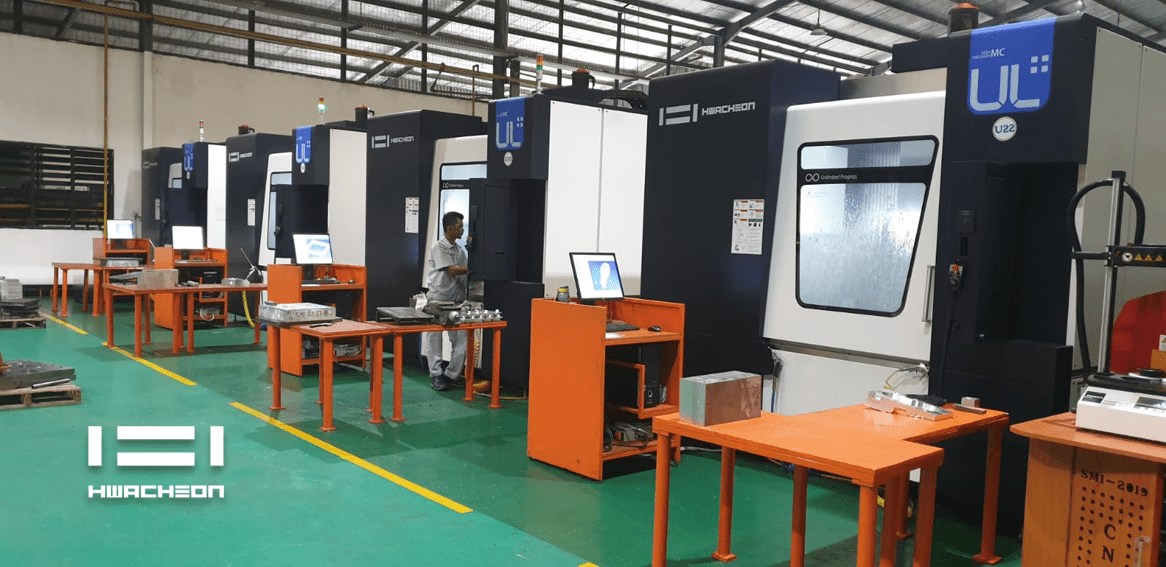
Factors That Affect Your CNC Machine Tolerances
To achieve tolerances on a part in a range of less than ten (10) microns is indeed challenging. To do so, consider the following factors influencing your machine tool’s tolerances:
- Room / work shop temperature
- Room / work shop fluctuating and changing temperatures
- Air draft created by doors, gates, aircon systems that may unsettle the otherwise stable temperature in your workshop
- Note that your machine temperature will change from the early morning (when your operator first starts) to lunch time and break to evening
- Spindle running at higher speed for prolonged time (take note of the cooling system of spindle housing, nose and bearings)
- Material used to build your machine (quality of casting material)
- Design of your machine (is the heat equally distributed at your machines body and parts?)
- Calibration of your machine prior to starting work
- Regular maintenance
- And many other points
To ensure that your machine tool performance isn’t compromised, Hwacheon uses Linear Roller Guide Ways made by a reputable company in Germany on all our CNC Machines. These include the Hwacheon VESTA line of machining centres. The size and the number of blocks / shoes used on each rail varies, subject to the size and purpose of the individual machine.
The prices of Linear Roller Guide Ways can vary widely, depending on the brand, type, size, quality grade and country of origin.
Note : These factors can be often directly handled or managed by machine users
Factors That Affect Your CNC Machine Part Tolerances
Beyond your machine, do also consider these factors which affect the tolerances of your machined part:
The material of your part
Clamping of part (micron tolerance work require micron clamping)
Machining in 2-3 Axis or even up to 5 Axis (with more axis used, your machine can allow more tolerances to come together)
Shape of the part – round, square, rectangular or other shapes
Heat during machining – ensure that you use sufficient coolant during cutting
Excessive removal of material at one go will put stress on your part. Hence, you should release this stress before you continue your fine finishing work.
Resolution of your CNC machines measuring system)
a) Encoder
b) Direct Measuring System (the finer – the better to achieve higher accuracy)
Your tools (quality tools provide quality work)
Tool holder quality and standard
Cutting approach and method as well as CNC program
And many other points
Note : These factors can be often directly handled or managed by machine users
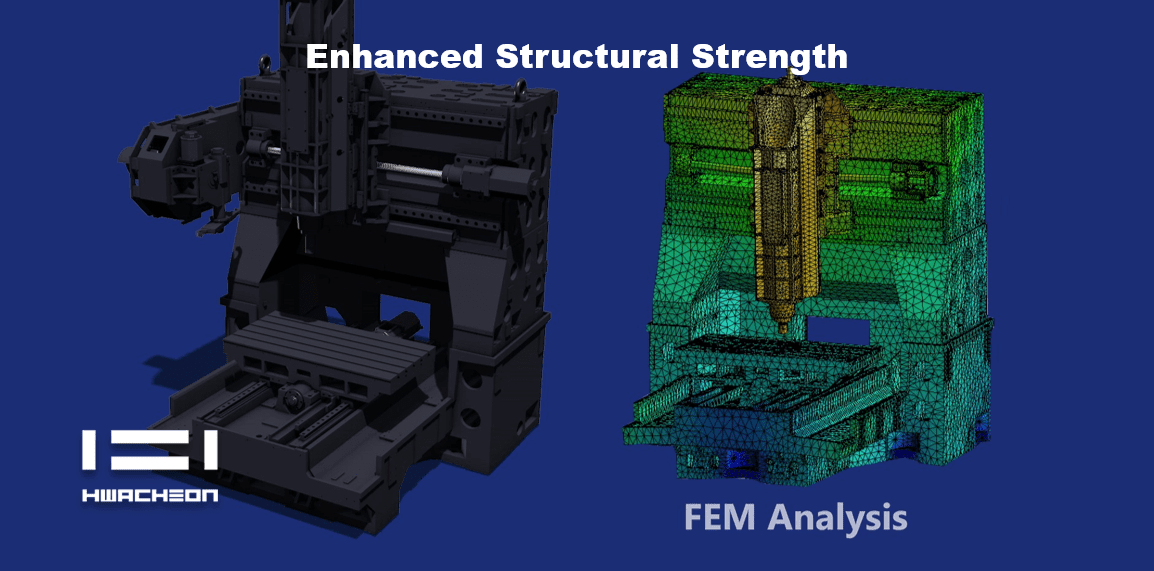
Machine Build, Casting And Other Factors Affecting CNC Machine Accuracy
Beyond the above, you need to also consider other factors pertaining to your CNC Machine Tool itself. For a company like Hwacheon Machine Tools, we will ensure that the following factors are taken care of:
- Made of the best casting quality (casted in its own foundry)
- Designed in Bridge Type structure to achieve the highest precision from the very basics
- German quality Roller Guide Way – the best Ball Screws in quality, standard and graduation offering a tighter pitch and larger than normal diameter (optionally also liquid cooled).
- Linear Glass Scales with the highest resolution in all axis
- Whole machine body wrapped in special temperature foam to evenly distribute temperature variation
- Temperature sensors on machine bed, frame and spindle housing to react to and compensate for any temperature changes quickly and accurately
- Two-chip conveyor running in separate insulated and detachable covers—these are mounted on vibration absorbing pads to avoid heat and vibration transfer to machines body
- Cables and pipes mounted and fitted with extra care within the machines’ mechanical structure to avoid vibrations
- Coolant tank positioned at machine rear to avoid heat from coolant affecting the machine bed (plus easy to clean and maintain)
- Direct built-in motor spindle available from 20-32-45,000rpm, with BBT 40 / HSK-A63 to HSK-E40 and HSK-E32
- Spindle cooling system with high quality cooling and filtration system
- Spindle housing and nose sectioned in small portion for effective and equal cooling. This prevents the running of oil from top to bottom seen in most other machines.
- Bearings directly injected with fresh temperature-controlled oil—this ensures that bearings do not run continuously in hot oil.
- Standard automation software loaded to the machine. For Hwacheon, it includes the following:
- a) HSDC – Hwacheon Spindle Displacement Control System
- b) HTDC – Hwacheon Thermal Displacement Control System
- c) HFDC – Hwacheon Frame Displacement Control System
- CNC control system and motor / amplifier package proven in all markets and industries worldwide
Note: These factors should be managed by your machine tool manufacturers.
Back To Our Machine Tool Customer…
Let us now come back to our customer. He has a fresh machining order to grab but realize with his current available machines that he cannot fulfil the requirements.
Shall he spend as low as possible or invest in the top range CNC machine tool available in the market?
The answer for sure is somewhere in between.
The truth is that achieving greater machining accuracy and standards requires a higher amount of investment in your CNC machine tool.
However, even the best and most sophisticated CNC machine tool cannot deliver the desired results if your surrounding circumstances do not match its deployment – or if such a top-end machine tool is operated like a basic standard machine!
Surroundings And Workshop Environment
The surrounding and environment of your workshop must cater for the machine in question.
Make sure that it is clean, with no vibrations on your shopfloor, and is temperature controlled.
Your CNC machine operator will need to understand the very basic requirements and care needed to achieve tight tolerances in making your part. Failing to do so will result in your new investment not delivering what is required. You may use the checklist that we supplied as a guide.
Quality Tool Holders
You need to also understand, that reusing the old tool holders run in other machines may be penny-wise but pound foolish. Doing so may ruin your new machines and shorten its longevity—just as you will not buy a new car and use the tires from your old vehicle!
Thus, your clamping equipment need to be selected accordingly to provide best and most accurate clamping and repeatability.
Conclusion
A mass-produced CNC machine will always deliver average results. That’s what they’re made for.
An in-house designed and carefully made machine tool will fit to even the highest demands – naturally, this will come at a certain cost.
In engineering there are no short cuts. While everybody would like to invest cheap to achieve the highest profits, doing so without the right tools and equipment is not just difficult, but often impossible.
If all points are taken care of and considered, a 3-axis CNC Vertical Machining Centre with X-travel of 1m and a Y-travel of 600mm which is well equipped and specified to achieve such tighter tolerances as well as good performance (and your needs) may come at a price range from USD 180,000 to USD 200,000.
Such a tool will certainly deliver the quality and tolerances needed within ten (10) microns and below.
Hwacheon Machine Tools—Your Choice For High CNC Machine Accuracy
Hwacheon in South Korea is known for over 76 years as the leading machine tool manufacturer. Our company is particularly strong in the quality Mould & Die as well as the precision part manufacturing industries.
To suit your needs in manufacturing a new part—such as the situation we have painted above—you should consider Hwacheon’s SIRIUS UM+ or SIRIUS UL+. These new and improved CNC machine tools build on the high quality SIRIUS line, and are considered the best in the market at very competitive prices.


